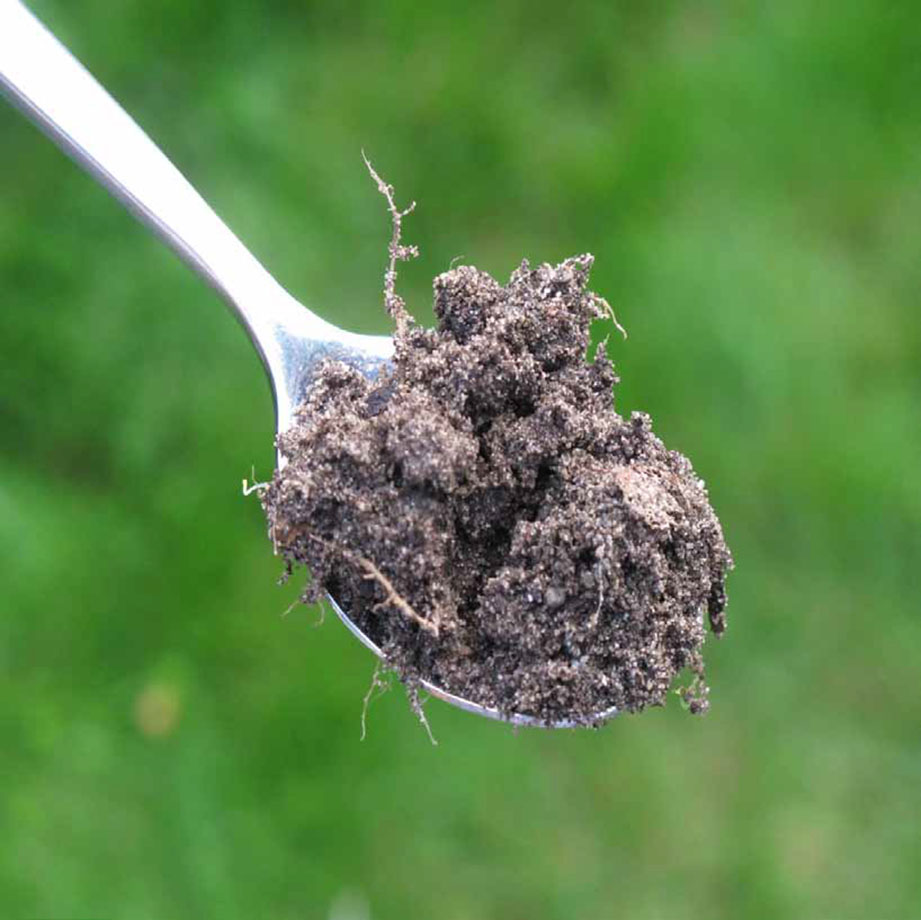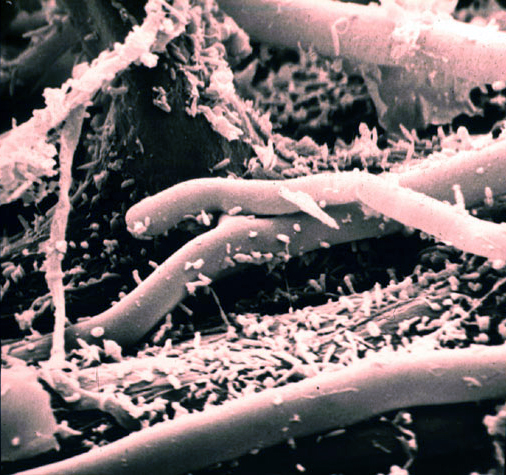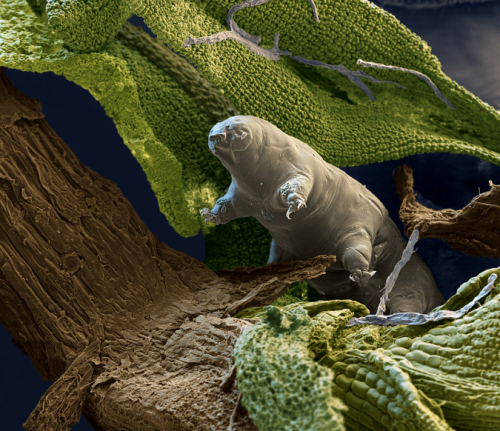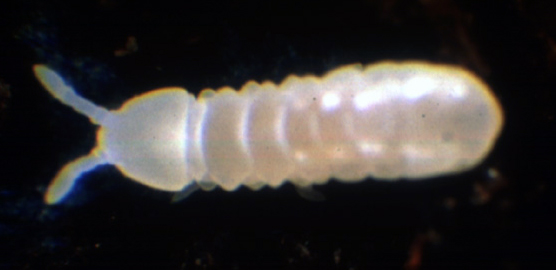“ . . . most of us rarely give any thought to the fact that the ground beneath our feet is a complicated, ever-moving tangle of rocks and animals and plants and water and chemical compounds that rivals the ocean as a wild, dark mysterious, and inscrutable realm.”
Farming with Soil Life. https://www.xerces.org/sites/default/files/publications/19-051.pdf
Many of us garden for wildlife, choosing native plants that provide vital shelter, food and habitat for a diversity of species. However, the soils in which our native plants grow also play an important role in the success of our native gardens. Soil is alive! Let’s dig deeper into this “wild, dark, mysterious, and inscrutable realm that is soil.”
Soils Function
- Soils are a medium for plant growth, anchoring roots, and also soaking up the nutrients, water and air that plants need to grow.
- Soils store and filter water. The pores between soil particles, created by roots and animal tunnels, capture and hold precipitation, where it is available to plant roots. The water-holding capacity of soils is also important in reducing erosion and flooding. Soils also filter water, degrading and removing contaminants as it moves downward through soil layers to become groundwater.
- Soils recycle and store organic material. Bacteria, fungi, insects and a host of other organisms decompose once-living plants and animals, producing organic material that can be used by living plants and animals for growth, maintenance and reproduction. Organic materials also store carbon, sometimes for centuries! This function helps mitigate climate change.
- Soils are habitat for wildlife. From large to small, many animals burrow, nest or hibernate in soil. Animal movements in soils contribute to soil health by continually aerating, churning and mixing.
- Soils are an engineering medium. Humans use large amounts of soil for construction and engineering projects. Little construction could be done without soils.
Soil Composition
Soils are composed of both living and non-living elements. Non-living minerals and rocks – soil particles of silt, sand and clay – intermingle with living elements to produce a unique mix of physical, chemical and biological properties that vary from region to region.
Soil Life
A teaspoon of healthy soil holds more living organisms than there are people on earth – 700 billion plus. Moreover, there are more different kinds of living organisms in the soil under our feet than there are living on top of the ground, from the microscopic to large insects. Together these soil organisms form a complex food web that makes life more livable for all of us.
Let’s take a look at some of these “little things that run the world.”
Bacteria. Microscopic soil bacteria are by far the most ubiquitous organisms living in soil. Bacteria play important roles both in decomposition, and in fixing nitrogen.
Rhizobial bacteria live in nodules on the roots of legumes (pea and bean family), converting atmospheric nitrogen into compounds that the plants use. In return, rhizobium receive sugars from the legume – a symbiotic relationship.
Protozoans. Living in the water film surrounding soil particles are single celled protozoans. As predators, decomposers and consumers of bacteria, protozoans are important in nutrient cycling.
Fungi. Soil fungi are diverse in shape, size, form and function. Some are single-celled, others are multi-cellular. Most are beneficial, contributing to decomposition and nutrient recycling.
One noteworthy group, the mycorrhizal fungi, live symbiotically with roots, enhancing nutrient and water uptake in the roots. In return, mycorrhizae receive sugars. More than 80% of the plants on earth have relationships with mycorrhizae.
Tardigrades. Also known as water bears, tardigrades are as big as the period at the end of this sentence. Tardigrades are predators and omnivores.
Nematodes. Nematodes can be predators, fungivores, bacterivores, omnivores, or plant parasites. They also disperse bacteria, carrying and excreting bacteria as they move through the soil. Nematodes tend to be found in water films within soil.
Mites. Mites are important predators and decomposers. They break leaf litter down, making it available to smaller organisms. Mites are abundant and diverse and can be found from the soil surface to deeper soil layers. Depending on the species, mites feed on everything from bacteria, fungi, algae, and dead plants and animals, to insect eggs, nematodes, other mites and springtails.
Dwarf millipedes. Dwarf millipedes are decomposers, fungivores, herbivores and scavengers. Moving through pore spaces in the soil, they are typically found around roots.
Springtails. Springtails come in all shapes and sizes. They feed on dead plant and animal materials, often in the top layers of soil and in leaf litter. They are so named because of their tail-like structure that enables them to jump a short distance. As decomposers, they contribute to nutrient availability in soils.
Earthworms. Earthworms are perhaps the best known of soil creatures, and their contributions are well-known: mixing and aerating soils, and distributing nutrients and minerals in their waste.
Centipedes. Centipedes are predators, and they are fast runners, sometimes chasing their prey. They eat earthworms, and other insects, large and small, injecting venom to paralyze and kill their prey.
Spiders. As predators, spiders are important in controlling other insect populations. Underground dwelling spiders also contribute to soil mixing and aeration.
Beetles. The tiger beetle is just one of a host of insects that spends the larval stage of its life in soil. Both larva and adult are predators. Larval tiger beetles are predators, feeding on other insects on the soil surface. Tiger beetle larval burrows can be 18” deep.
These are just a few of the millions of organisms that live in the soil under our feet. All are important in maintaining healthy, productive soils.
Here are four tips to support underground wildlife, large and small, in the soils in your garden:
- Disturb the soil as little as possible. Tilling and digging disturbs and damages the soil food web.
- Grow a diversity of plants. Different species of plants add and remove different compounds from the soil, creating more diverse conditions for the organisms living in the soil
- Keep living roots growing in the soil for as much of the year as possible. Roots feed living organisms in the soil.
- Keep the soil covered with dead plant material. Mulch not only protects the soil from drying out fast, but it also feeds the decomposers, which are then eaten by other living things. If you want healthy soil, you should not see it very often!
Soil wildlife makes your prairie garden grow. Protect it!
All photos courtesy of USDA Soil Resources Conservation Service. https://www.nrcs.usda.gov/wps/portal/nrcs/photogallery/soils/health/biology/gallery/?cid=1788&position=Promo
Reference:
Hopwood, Frische, May and Lee-Mader. 2021. Farming With Soil Life: A Handbook for Supporting Soil Invertebrates and Soil Health on Farms. Xerces Society for Invertebrate Conservation. https://www.xerces.org/sites/default/files/publications/19-051.pdf




